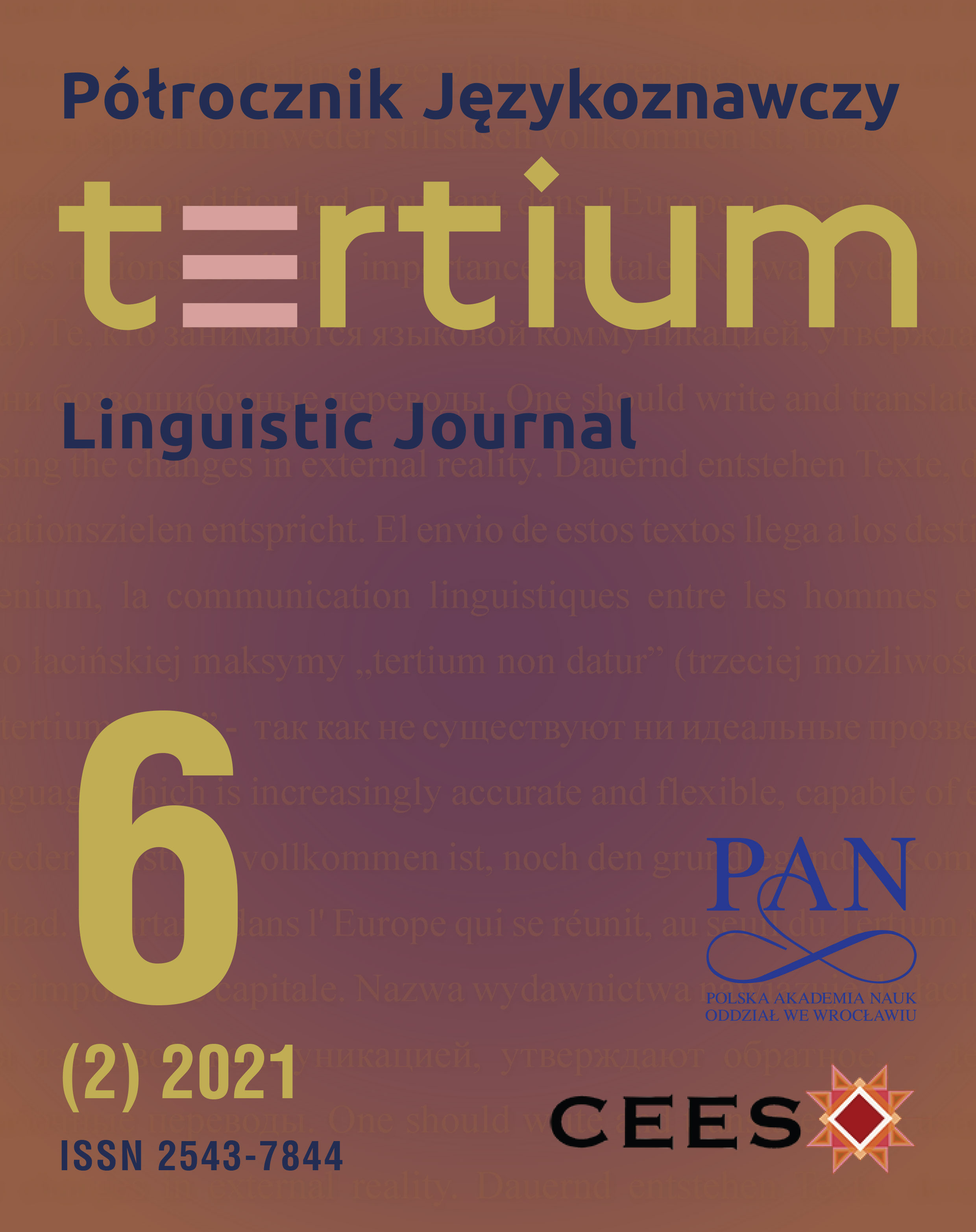Zarys mechanizmów językowych w niemieckich kawałach
Outline of Linguistic Mechanisms in German Jokes
Author(s): Dorota BiadalaSubject(s): Anthropology, Social Sciences, Language and Literature Studies, Customs / Folklore, Theoretical Linguistics, Applied Linguistics, Communication studies, Pragmatics, Comparative Linguistics, Sociolinguistics, Cultural Anthropology / Ethnology, Culture and social structure
Published by: Krakowskie Towarzystwo Popularyzowania Wiedzy o Komunikacji Językowej Tertium
Keywords: joke; humour; Polish-German contrastive linguistics
Summary/Abstract: Obiektem bliższej obserwacji w niniejszym artykule jest językowa analiza niemieckich kawałów (dowcipów) jako krótkich form humorystycznych, w szczególności analiza zawartych w nich „nieporozumień” językowych, które są strategicznym wyróżnikiem gatunkowym tych tekstów. Ich głównym zadaniem jest zażartowanie z kogoś i rozśmieszenie innych. Przeprowadzona analiza lingwistyczna „nieporozumień” językowych porusza różne aspekty komunikacyjne osadzone w perspektywie społecznej: zarówno pragmatykę komunikacji międzykulturowej, kreatywność w komunikacji wewnątrzkulturowej, jak i humor w kulturze i komunikacji. Materiał badawczy wykorzystany do niniejszej analizy tworzy korpus utworzony z ponad 400 niemieckich kawałów pochodzących z różnych źródeł, w większości zaczerpniętych ze zbiorów internetowych. Celem niniejszego opracowania jest zaprezentowanie różnych perspektyw badawczych i analiza językowych mechanizmów służących tworzeniu „nieporozumień” językowych na podstawie wprowadzonych 13-tu kategorii opisujących bliżej gatunek tekstu ‘kawał’ z uwzględnieniem niemieckiej specyfiki kulturowej. // The main subject of this article is the linguistic analysis of German jokes as the short humorous formats, emphasis is placed on the analysis of various language-related “misunderstandings” found in these jokes, whose are strategic genre differentiator of these texts. Their main function is to make fun of someone and to make others laugh. The analysis of these language-related “misunderstandings” raises various communicative issues that are rooted in the social perspective, such as: pragmatics of intercultural communication, creativity in intracultural communication, or humour in culture and in communication. The research material used for this analysis is composed of over four hundred German jokes coming from various sources, with the largest number of texts from internet sources. The aim of this publication is to present various research perspectives and to analyse linguistic mechanisms used in the creation of language-related “misunderstandings” on the basis of thirteen categories that describe the genre ‘joke’ considering the German cultural specificity.
Journal: Półrocznik Językoznawczy Tertium
- Issue Year: 6/2021
- Issue No: 2
- Page Range: 50-68
- Page Count: 19
- Language: Polish

